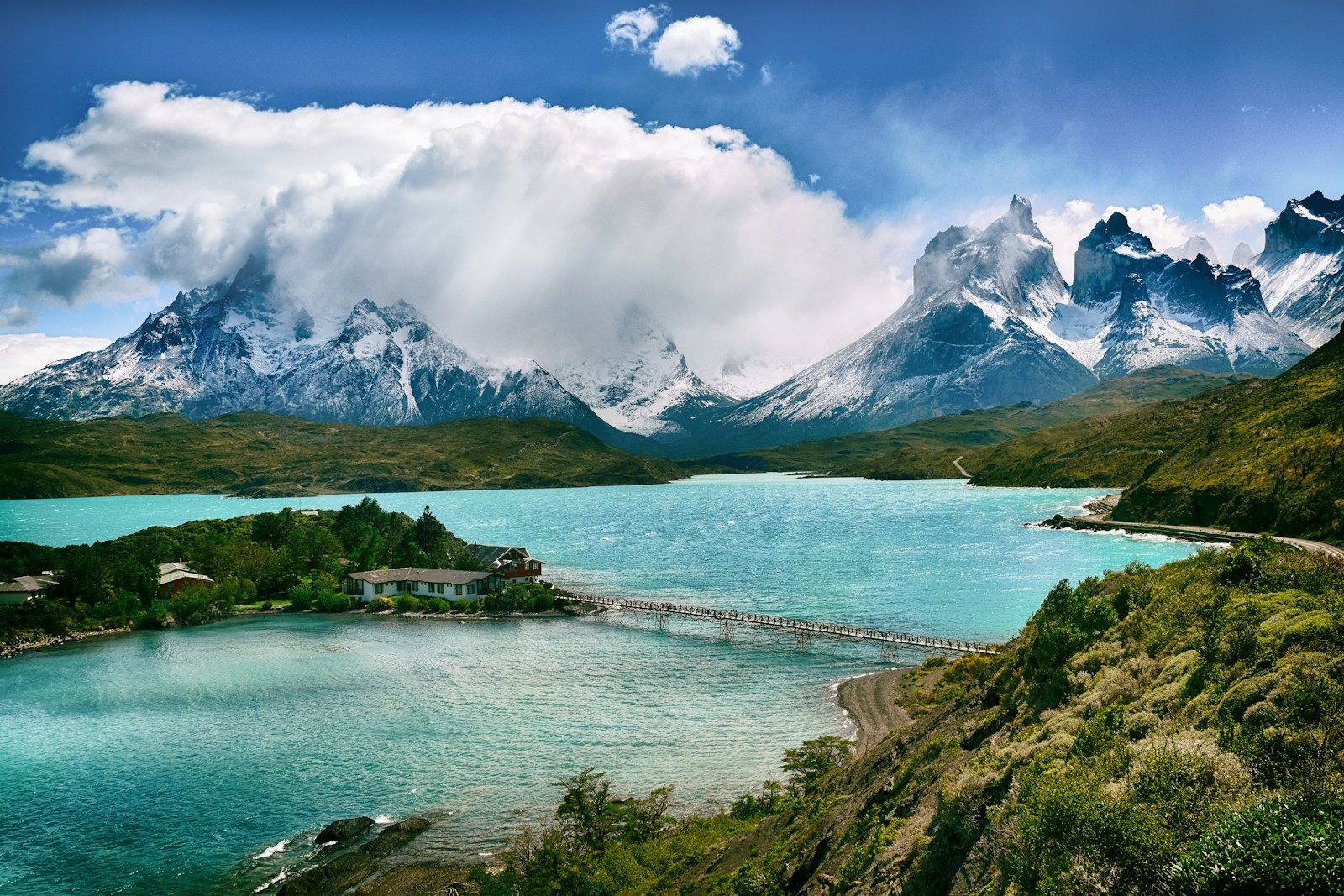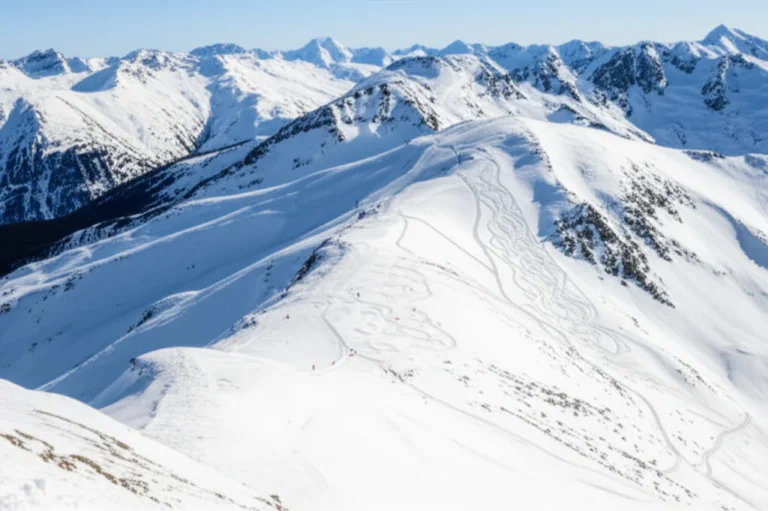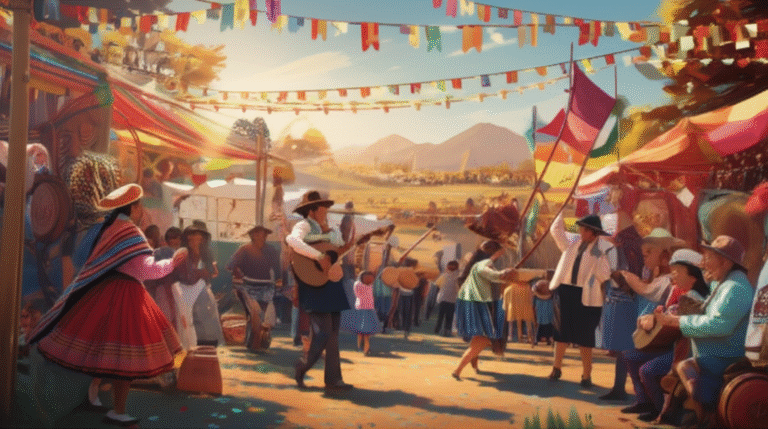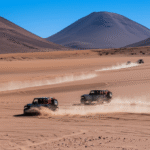Support our educational content for free when you purchase through links on our site. Learn more
Chile’s Peak & Off-Peak Tourist Seasons Explained (2025) 🌎
Planning a trip to Chile but puzzled about when to go? You’re not alone! Chile’s vast landscape—from the sunbaked Atacama Desert to the icy peaks of Patagonia—means its tourist seasons are as diverse as its geography. We once found ourselves scrambling to book a Patagonia lodge last-minute during peak summer, only to discover prices had soared and availability was razor-thin. That experience taught us the hard way: knowing Chile’s peak and off-peak seasons can save you big bucks and headaches.
In this guide, we’ll unravel the mystery behind Chile’s tourist seasons, reveal how they impact accommodation prices and availability, and share insider tips to help you snag the best deals—whether you’re chasing summer sun, winter snow, or the quiet charm of shoulder seasons. Ready to master Chile’s travel calendar and plan your perfect adventure? Let’s dive in!
Key Takeaways
- Chile’s peak tourist seasons are summer (December–February) for general travel and winter (June–September) for skiing, driving prices and demand sky-high.
- Off-peak and shoulder seasons offer quieter experiences, lower accommodation costs, and unique natural beauty, but may come with weather trade-offs.
- Accommodation prices can vary by 30-50% or more depending on season and region—early booking is crucial during peaks.
- Festivals and national holidays like Fiestas Patrias (September) create mini peaks that affect availability and prices.
- Smart booking strategies include flexible dates, refundable rates, and exploring alternative lodging options like hostels and eco-lodges.
👉 CHECK PRICE on:
- Ski Resorts: Valle Nevado on Booking.com | Official Website
- Vacation Rentals: Airbnb Chile
- Hotels: Booking.com Chile
- Hostels: Hostelworld Chile
Ready to unlock Chile’s seasonal secrets? Keep reading for the full scoop!
Table of Contents
- ⚡️ Quick Tips and Facts About Chile’s Tourist Seasons
- 🌎 Chile’s Climate and Geography: Why Seasons Matter for Travelers
- 📅 What Are the Peak Tourist Seasons in Chile?
- ❄️ Off-Peak and Shoulder Seasons: Hidden Gems and Deals
- 💸 How Seasonal Demand Influences Accommodation Prices and Availability
- 🏔️ Skiing Season in the Andes: When to Go for Snow and Savings
- 🏝️ Coastal Escapes: Summer Tourism in Valparaíso and Viña del Mar
- 🌿 Patagonia’s Tourist Seasons: Best Times for Nature and Budget Travelers
- 🌞 How Chile’s Festivals and Holidays Affect Tourism Flow and Prices
- 📊 Insider Tips: Booking Strategies to Beat High Prices and Secure Stays
- 🛎️ Top Accommodation Types and Their Seasonal Pricing Trends
- 🌐 Online Tools and Resources to Track Chile’s Tourism Seasons and Deals
- 🔍 What Travelers Say: Real Experiences on Seasonality and Costs in Chile
- 🎯 Conclusion: Mastering Chile’s Tourist Seasons for the Ultimate Trip
- 🔗 Recommended Links for Planning Your Chile Trip
- ❓ Frequently Asked Questions About Chile’s Tourist Seasons
- 📚 Reference Links and Sources
⚡️ Quick Tips and Facts About Chile’s Tourist Seasons
If you’re wondering “What are the peak and off-peak tourist seasons in Chile, and how do they affect accommodation prices and availability?”, you’re in the right place! At Chile Vacay™, we’ve trekked Patagonia’s trails, skied the Andes, and soaked in coastal vibes to bring you the lowdown on Chile’s tourism rhythms. Before we dive deep, here are some quick nuggets to keep in mind:
- ✅ Peak season generally runs December to February (summer in the Southern Hemisphere), with the highest prices and busiest spots.
- ❌ Off-peak spans March to November, offering fewer crowds and better deals, but some regions have limited access or colder weather.
- 🏔️ Ski season peaks June to September in the Andes, attracting winter sports lovers.
- 🌿 Shoulder seasons (spring and fall) can be the sweet spot for weather, wildlife, and savings.
- 🏨 Accommodation prices can fluctuate by 30-50% or more between seasons, especially in hotspots like Torres del Paine and Santiago.
- 🎉 National holidays and festivals (like Chile’s Independence Day on September 18) create mini peak periods even in off-peak months.
For a full breakdown and insider tips, keep reading! And if you want a broader overview of the best times to visit Chile, check out our related article: What are the best times to visit Chile for a vacation?.
🌎 Chile’s Climate and Geography: Why Seasons Matter for Travelers
Chile is a country of extremes — stretching over 2,600 miles from the driest desert on Earth in the north (Atacama) to the windswept glaciers of Patagonia in the south. This incredible diversity means seasonality varies dramatically by region, so understanding Chile’s climate zones is key to planning your trip.
Key Climate Zones and Their Seasonal Patterns
| Region | Climate Type | Peak Tourist Season | Off-Peak Highlights |
|---|---|---|---|
| Atacama Desert | Arid, desert | December–February (summer) | Cooler, clear skies, fewer tourists |
| Central Chile (Santiago, Valparaíso) | Mediterranean | December–February (summer) | Mild winters, fewer crowds, lower prices |
| Andes Mountains | Alpine, snowy winters | June–September (winter) | Ski season, winter sports |
| Patagonia | Cold, windy | October–March (spring/summer) | Fall colors, fewer tourists, wildlife viewing |
| Easter Island | Tropical | December–March (summer) | Festivals, swimming, higher prices |
The diversity means your “peak” season depends on where you’re headed. For example, summer is perfect for Patagonia trekking but winter is prime time for skiing near Santiago.
📅 What Are the Peak Tourist Seasons in Chile?
Chile’s peak tourist seasons are when demand for flights, hotels, and tours skyrocket — and prices follow suit. Here’s the scoop:
1. Summer (December to February) — The Big One
- Why it’s peak: Summer in Chile means warm weather, long days, and school holidays. Families and international tourists flood popular destinations like Santiago, Valparaíso, Viña del Mar, and Patagonia.
- What to expect: Bustling cities, crowded national parks (Torres del Paine, Vicente Pérez Rosales), and fully booked accommodations.
- Accommodation impact: Prices can be up to 50% higher than off-peak. Booking months in advance is a must, especially in Patagonia and coastal resorts.
2. Winter (June to August) — Ski Season Peaks
- Why it’s peak: Ski resorts around Santiago (Valle Nevado, La Parva, El Colorado) buzz with winter sports enthusiasts.
- What to expect: Snow-covered mountains, lively ski towns, and festive atmospheres.
- Accommodation impact: Ski lodges and hotels near the Andes fill quickly, with premium pricing during weekends and holidays.
3. National Holidays and Festivals — Mini Peak Periods
- September 18 (Fiestas Patrias): Chile’s Independence Day celebrations cause a spike in domestic travel and accommodation demand.
- Other holidays: Christmas, New Year’s, and Easter also see increased bookings.
❄️ Off-Peak and Shoulder Seasons: Hidden Gems and Deals
If you’re looking to dodge crowds and save some pesos, the off-peak and shoulder seasons are your best friends.
Off-Peak (March to November, excluding ski season)
- Advantages:
- Lower accommodation prices (often 30-50% less).
- Fewer tourists, meaning more peaceful experiences.
- Easier access to popular sites without the crowds.
- Drawbacks:
- Some hiking trails or tours may be closed or limited (especially in Patagonia during winter).
- Weather can be colder or wetter, depending on the region.
Shoulder Seasons (Spring: September-November, Fall: March-May)
- Why they rock:
- Beautiful fall foliage or spring blooms.
- Wildlife spotting opportunities increase (like pumas in Torres del Paine during fall).
- Moderate prices and decent weather.
Regional Notes
- Patagonia: Shoulder seasons offer a quieter, more intimate experience but require flexible planning due to unpredictable weather.
- Atacama Desert: Cooler nights but sunny days make spring and fall ideal for stargazing and exploring.
- Coastal areas: Mild weather year-round but fewer beachgoers in off-peak months.
💸 How Seasonal Demand Influences Accommodation Prices and Availability
Seasonality in Chile isn’t just about weather — it’s a major driver of accommodation pricing and availability. Here’s how it breaks down:
Price Fluctuations by Season
| Season | Average Price Trend | Booking Window Advice |
|---|---|---|
| Peak Summer | +30% to +50% or more | Book 3-6 months ahead |
| Winter Ski Season | +20% to +40% | Book 2-4 months ahead |
| Shoulder Seasons | Stable or slight increase | Book 1-2 months ahead |
| Off-Peak | -20% to -50% | Can book last minute but risky |
Accommodation Types and Seasonal Effects
- Hotels and Resorts: Most affected by seasonality, especially in tourist hotspots. Expect sold-out nights during peak times.
- Hostels and Guesthouses: More flexible but still busy in summer and ski season.
- Airbnb and Vacation Rentals: Can offer better deals off-peak; however, popular rentals book fast in high season.
Insider Tip from Chile Vacay™:
Use flexible cancellation policies and book refundable rates during shoulder seasons to snag deals without the risk.
🏔️ Skiing Season in the Andes: When to Go for Snow and Savings
Chile’s Andes mountains are a winter wonderland from June to September, attracting skiers and snowboarders from around the globe.
Top Ski Resorts and Their Peak Times
| Resort | Peak Season | Best Time for Deals | Features |
|---|---|---|---|
| Valle Nevado | July-August | Early June or late September | Largest skiable area in Chile |
| La Parva | July-August | Shoulder weeks around peak | Family-friendly, great terrain |
| El Colorado | July-August | Weekdays in shoulder season | Night skiing available |
What to Expect
- Crowds: Weekends and holidays get busy; weekdays are quieter and cheaper.
- Prices: Lodging near ski resorts spikes during peak weeks; off-peak weeks offer better rates.
- Other Activities: Hot springs, snowshoeing, and cozy mountain dining add to the experience.
Personal Story:
We once booked a last-minute stay at Valle Nevado in early June and scored a sweet deal with almost empty slopes — pure bliss! Just be ready for variable snow conditions early and late in the season.
🏝️ Coastal Escapes: Summer Tourism in Valparaíso and Viña del Mar
Chile’s coastlines come alive in summer, especially in Valparaíso and Viña del Mar, where beach lovers and culture seekers mingle.
Peak Season Vibes
- When: December through February.
- Why: Warm weather, school holidays, and festivals like the Viña del Mar International Song Festival in February.
- Accommodation: Hotels and beachfront rentals fill quickly; expect premium rates.
Off-Peak Perks
- Cooler but pleasant weather from March to November.
- Lower prices and quieter beaches.
- Great time for exploring museums, street art, and local cuisine without the crowds.
Insider Tip:
Book accommodations near the beach early if visiting during the festival — it’s a magnet for tourists worldwide!
🌿 Patagonia’s Tourist Seasons: Best Times for Nature and Budget Travelers
Patagonia is a bucket-list destination but also one of the priciest regions in Chile. Knowing when to go can save you a bundle and enhance your experience.
Seasonal Breakdown
| Season | Highlights | Drawbacks |
|---|---|---|
| Summer (Dec–Mar) | Warmest weather, all trails open | Crowds, highest prices |
| Shoulder (Oct–Nov, Mar–Apr) | Fewer tourists, fall colors, wildlife | Variable weather, some trail closures |
| Winter (Jun–Aug) | Snowy landscapes, solitude | Many trails closed, harsh weather |
Accommodation Insights
- Peak summer means bookings months in advance for lodges like Explora Patagonia or Tierra Patagonia.
- Shoulder seasons offer discounts and availability, but check weather forecasts carefully.
- Winter is best for adventurers comfortable with cold and limited services.
Pro Tip:
Use Booking.com or Airbnb filters to compare prices across seasons and read recent traveler reviews for real-time insights.
🌞 How Chile’s Festivals and Holidays Affect Tourism Flow and Prices
Chile’s vibrant culture means holidays and festivals can create mini peak seasons that impact accommodation and travel plans.
Major Events to Know
- Fiestas Patrias (September 18-19): The biggest national holiday, with parades, barbecues, and celebrations nationwide. Expect high domestic travel and booked accommodations.
- New Year’s Eve and Christmas: Popular times in Santiago and coastal resorts.
- Tapati Rapa Nui Festival (Easter Island, February): Cultural festival attracting international visitors, with limited accommodation availability.
Impact on Prices and Availability
- Hotels and rentals spike in price and book out fast during these events.
- Public transport and tours may require advance reservations.
Insider Tip:
If you want to experience local culture but avoid crowds, consider visiting festivals in smaller towns or during less busy days of the event.
📊 Insider Tips: Booking Strategies to Beat High Prices and Secure Stays
Navigating Chile’s seasonal pricing can feel like a game of chess — but we’ve got your winning moves.
Step-by-Step Booking Strategy
- Plan Early for Peak Seasons: Book flights and accommodations 3-6 months ahead, especially for Patagonia and ski resorts.
- Use Flexible Dates: If possible, travel mid-week or during shoulder seasons for better rates.
- Leverage Cancellation Policies: Opt for refundable bookings to adjust plans if weather or prices change.
- Compare Platforms: Use Booking.com, Airbnb, and Expedia to find the best deals and read recent reviews.
- Consider Alternative Accommodations: Hostels, guesthouses, and eco-lodges often have better off-peak rates.
- Monitor Deals: Sign up for alerts from airlines and accommodation sites to catch flash sales.
Personal Anecdote:
We once snagged a last-minute Airbnb in Puerto Natales during shoulder season at half the usual price — proof that patience and flexibility pay off!
🛎️ Top Accommodation Types and Their Seasonal Pricing Trends
Chile offers a range of lodging options, each with unique seasonal pricing dynamics.
| Accommodation Type | Peak Season Impact | Off-Peak Advantage | Recommended For |
|---|---|---|---|
| Hotels | Price surges, limited rooms | Discounts, more availability | Comfort seekers, families |
| Hostels | Busy but affordable | Quiet, even cheaper | Backpackers, budget travelers |
| Eco-Lodges | Popular in Patagonia, pricier | Off-season discounts | Nature lovers, eco-tourists |
| Vacation Rentals | High demand in summer | Great deals off-peak | Groups, longer stays |
| Ski Lodges | Peak winter pricing | Some deals early/late season | Ski enthusiasts |
Booking Platforms to Explore
- Booking.com: Great for hotels and lodges with flexible cancellation.
- Airbnb: Ideal for unique stays and longer visits.
- Hostelworld: Best for budget and social travelers.
🌐 Online Tools and Resources to Track Chile’s Tourism Seasons and Deals
Staying ahead of Chile’s seasonal swings is easier with the right tools.
Must-Use Resources
- Chile Tourism Official Site: chile.travel — Up-to-date info on events and seasons.
- Booking Platforms: Booking.com, Airbnb — Filter by price, availability, and cancellation policies.
- Flight Alerts: Use Google Flights or Skyscanner to monitor airfare fluctuations.
- Weather Apps: AccuWeather or Weather.com for regional forecasts.
- Local Blogs: Chile Vacay™ categories like Destinations and Travel Tips for insider updates.
Pro Tip:
Set calendar reminders to check prices 3-6 months before your planned trip and again 1 month prior to catch last-minute deals.
🔍 What Travelers Say: Real Experiences on Seasonality and Costs in Chile
Nothing beats hearing from fellow travelers who’ve navigated Chile’s seasons firsthand.
Highlights from Recent Reviews
- “Visiting Torres del Paine in November was magical — fewer people and the fall colors were stunning. Plus, we saved a ton on lodging!” — Maria, USA
- “We went skiing in Valle Nevado in July. The slopes were busy on weekends, but weekdays were perfect and cheaper.” — Lucas, Brazil
- “Avoided the summer crowds in Valparaíso by going in March. The weather was still great, and we had the beach almost to ourselves.” — Emma, UK
Common Themes
- Flexibility pays off — travelers who adapt dates find better deals.
- Booking early is crucial for peak seasons, especially Patagonia and ski resorts.
- Off-peak travel offers a more authentic, relaxed experience with locals.
For more traveler stories and tips, explore our Adventure Travel section.
🎯 Conclusion: Mastering Chile’s Tourist Seasons for the Ultimate Trip
So, what’s the final verdict on Chile’s peak and off-peak tourist seasons and their impact on accommodation prices and availability? Here’s the scoop from your Chile Vacay™ travel experts:
- Peak seasons (summer December–February and winter ski months June–September) bring bustling crowds, lively festivals, and the highest prices. If you crave vibrant atmospheres and perfect weather for Patagonia trekking or beach lounging, plan ahead and book early.
- Off-peak and shoulder seasons offer a quieter, more budget-friendly Chile with hidden gems, stunning fall colors, and fewer tourists. Just be ready for some weather variability and limited access in remote areas.
- Accommodation prices can swing dramatically — sometimes by 30-50% or more — so timing your trip right can save you a fortune.
- Festivals and national holidays like Fiestas Patrias create mini peak periods even in off-peak months, so keep those on your radar.
- Flexibility and smart booking strategies (think refundable rates, mid-week stays, and alternative lodging) are your best weapons against high prices and sold-out rooms.
By understanding Chile’s diverse climates and tourist flows, you can tailor your trip perfectly — whether that means skiing the Andes in July, hiking Torres del Paine in November, or soaking up coastal vibes in March. Remember, the best time to visit depends on where you want to go and what you want to do.
Ready to start planning? Don’t forget to check out our What are the best times to visit Chile for a vacation? guide for even more insider tips!
🔗 Recommended Links for Planning Your Chile Trip
👉 CHECK PRICE on:
- Valle Nevado Ski Resort: Booking.com | Official Website
- Airbnb Chile Rentals: Airbnb
- Booking.com Chile Hotels: Booking.com
- Hostelworld Chile: Hostelworld
Recommended Reading:
- Lonely Planet Chile & Easter Island – A comprehensive travel guide packed with seasonal tips and destination insights.
- The Rough Guide to Chile – Great for off-the-beaten-path ideas and cultural context.
Find these books on Amazon:
❓ Frequently Asked Questions About Chile’s Tourist Seasons
What are the best times of the year to visit popular destinations in Chile, such as Santiago, Patagonia, and the Lake District?
Santiago and Central Chile:
Best visited in spring (September-November) and fall (March-May) for mild weather, fewer crowds, and lower prices. Summer (December-February) is warm and lively but crowded.
Patagonia:
Peak season is October to March (spring and summer), ideal for hiking and wildlife viewing. Shoulder seasons (September-November and March-April) offer fewer tourists and beautiful fall colors but more unpredictable weather. Winter (June-August) is harsh but perfect for solitude and snowy landscapes.
Lake District:
Similar to Patagonia, summer months are best for outdoor activities, while shoulder seasons provide quieter experiences with some weather trade-offs.
How do seasonal fluctuations in tourism impact the cost of activities and tours in Chile, such as hiking, skiing, and wine tastings?
- Hiking tours in Patagonia and national parks are most expensive and fully booked during summer. Off-peak seasons offer discounted tours but may have limited trail access.
- Skiing prices peak in July and August with premium rates for lessons, rentals, and lodging. Early or late season skiing can be cheaper but with variable snow conditions.
- Wine tastings in regions like the Maipo and Colchagua valleys see more visitors in summer and harvest season (March-April), which can increase prices and reduce availability. Off-peak visits offer more intimate experiences and better deals.
Are there any significant festivals or events in Chile that attract large crowds and affect accommodation prices, and if so, when do they take place?
Yes! The biggest is Fiestas Patrias (Chile’s Independence Day) on September 18-19, causing a surge in domestic travel and accommodation demand. The Viña del Mar International Song Festival in February draws international crowds to the coast. Easter Island’s Tapati Rapa Nui Festival in February is another major event requiring early bookings.
What are some strategies for finding affordable and available accommodation in Chile during peak tourist season, such as booking in advance or considering alternative options?
- Book early: For peak seasons, secure lodging 3-6 months in advance.
- Be flexible: Traveling mid-week or during shoulder periods can reduce costs.
- Consider alternative accommodations: Hostels, guesthouses, and eco-lodges often have better availability and prices.
- Use refundable bookings: Allows you to adjust plans if better deals appear.
- Leverage multiple platforms: Compare Booking.com, Airbnb, Hostelworld, and direct hotel websites.
- Monitor deals: Sign up for alerts and flash sales on flights and hotels.
How does weather variability during off-peak seasons affect travel plans in Chile?
Off-peak seasons can bring unpredictable weather, especially in Patagonia and the Andes, including rain, snow, and strong winds. Travelers should pack accordingly, plan flexible itineraries, and check local weather forecasts regularly. Some trails or roads may be closed, so always confirm with local guides or park authorities.
Can visiting Chile during off-peak seasons provide a more authentic cultural experience?
Absolutely! With fewer tourists, you can engage more deeply with local communities, enjoy traditional festivals without crowds, and experience Chilean hospitality in a relaxed setting. Off-peak travel often means more personalized tours and better access to hidden gems.
📚 Reference Links and Sources
- Chile Tourism Official Site: chile.travel
- Valle Nevado Ski Resort: vallenevado.com
- Booking.com Chile: booking.com
- Airbnb Chile: airbnb.com
- Hostelworld Chile: hostelworld.com
- Audley Travel US – Best Time to Visit Chile | Climate Guide: audleytravel.com
- EcoChile – How to Decide the Best Season for Your Chile Trip: ecochile.travel
- Chile Travel Blog – Low Season Advantages: chile.travel/blog
Ready to plan your unforgettable Chile adventure? Remember, timing is everything — and now you’re armed with the insider knowledge to make the most of every season! 🌟




